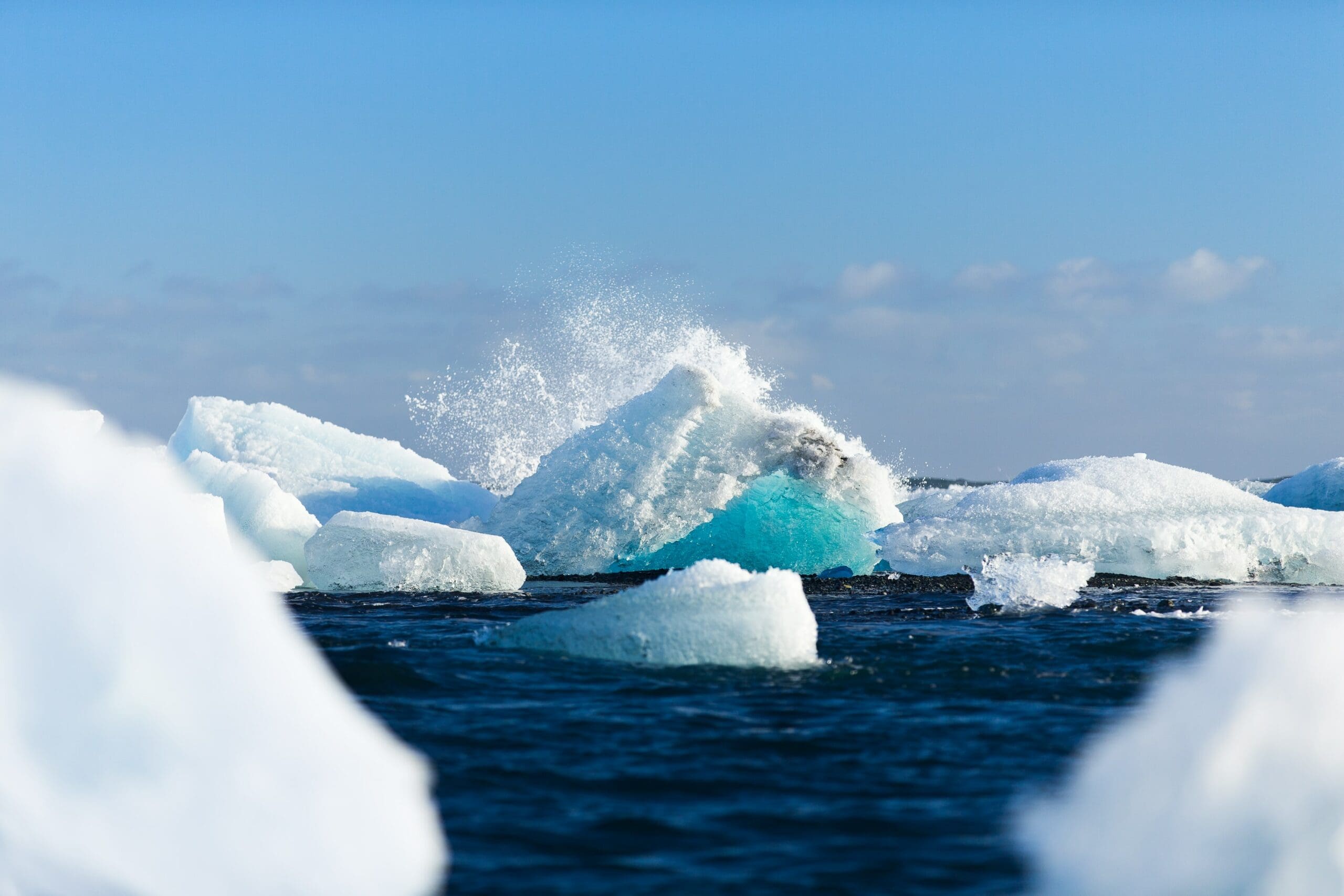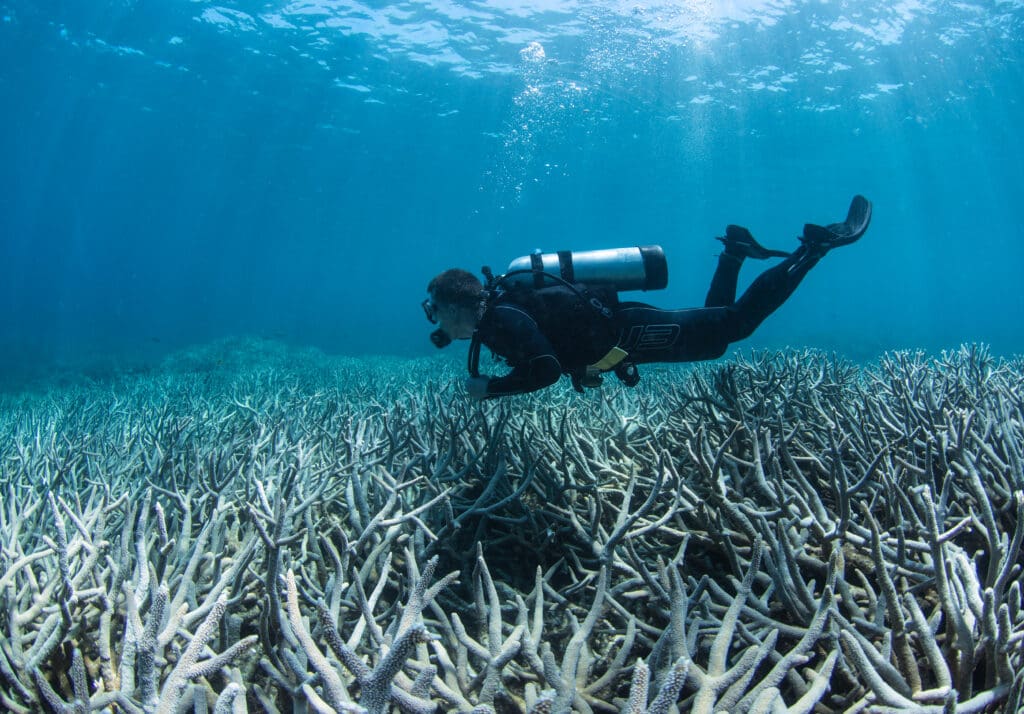Climate Change and the Ocean
The ocean has softened the blows of global warming, but it’s come at great cost
The ocean provides countless services and benefits for the planet and humanity, with one of the most important being climate regulation. Covering 70 percent of Earth’s surface, the ocean influences weather and climate by absorbing solar radiation, distributing that heat and associated moisture throughout the ocean and around the globe, and driving global weather systems.
The ocean has also buffered humans and other terrestrial organisms from the worst effects to date of climate disruption by both directly absorbing about 30 percent of all anthropogenic carbon dioxide (CO2) pollution and absorbing more than 90 percent of the excess heat trapped in the biosphere by CO2 pollution.
Unfortunately, these buffering functions have come at a high cost, disrupting the ocean in three dangerous interconnected ways: heating, acidification, and deoxygenation.
30%
increase in ocean acidity since the Industrial Revolution
90%
of excess heat that’s been absorbed by the ocean
Overheating
The excess heat absorbed by the ocean is truly staggering—equivalent to five Hiroshima-sized atomic bombs of heat energy going into the ocean every second. This heat absorption has caused average global sea surface temperatures to increase by about 1.5ºF since 1901. As ocean temperatures increase, a host of negative effects cascade. Ocean circulation patterns that transport warm and cold water around the globe are altered, weathering patterns are disrupted, and storms are intensified. Warmer waters are also causing sea levels to rise, through both ice sheet melt and because warm water expands, posing monumental threats to coastal communities around the globe. Additionally, warming seas have caused an increase in marine heatwaves, causing devastating impacts to coral reefs and forcing many marine species to shift their ranges poleward, which is jeopardizing food security in the tropics.


Deoxygenation
Because warm water is less soluble than cool water, warming oceans are unable to store as much oxygen. Warm water is also lighter than cold water, preventing it from sinking and mixing with cooler water to spread oxygen evenly throughout the ocean. This reduction and distribution of oxygen is altering the balance of marine life, favoring species tolerant to low oxygen levels, such as microbes, at the expense of most marine species, including fish, and resulting in a reorganized global marine food web that poses significant food security and socio-economic threats.
Ocean Acidification
About 30 percent of the excess CO2 created over the last 170 years since the Industrial Revolution has ended up directly in the ocean. In turn, this has resulted in a 30 percent increase in ocean acidity. This acidification has far-reaching implications for the ocean and its marine life. Ocean acidification reduces the amount of carbonate, a key building block in seawater, making it difficult for marine organisms, such as coral and some plankton, to form their shells and skeletons. Acidification also affects biodiversity as well as fisheries and aquaculture—threatening food security for millions of people.

About Ocean Visions
Ocean Visions is a non-profit organization that catalyzes innovation at the intersection of the ocean and climate crises. We facilitate multisector collaborations from within our Network and beyond, working with leading research institutions, the private sector, and public-interest organizations to fully explore and advance responsible and effective ocean-based climate solutions. In short, we work to stabilize the climate and restore ocean health. Learn more about our approach, explore our programs, and join our efforts.